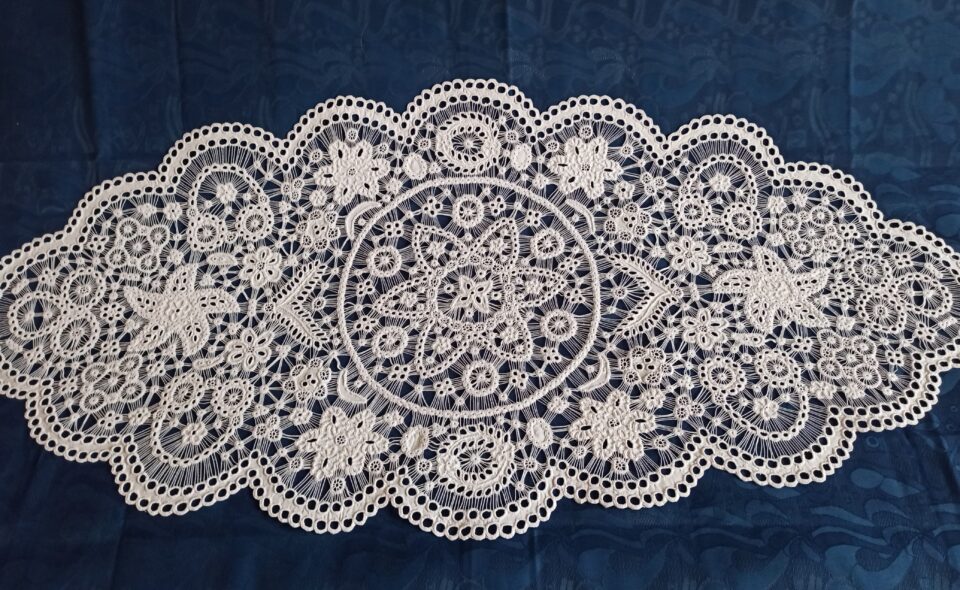
The roots of snutka (snutki) embroidery link it to Renaissance lace. It is believed that snutki is its much simplified form, especially considering the technique of making it. However, they retain a specific openwork and many elements among the motifs and the way they are combined. First of all, in the countryside, this form of lace was transformed and, by removing the finished ribbons, transformed into embroidery.
Spun embroidery was widely used in the Greater Poland countryside as late as the mid-19th century. It was used to embellish caps, shirts, creches and sarees. Embroidering was mainly done by the poorer social classes in order to increase their income. Embroidery was also done by girls before marriage, gathering in groups of several at home on long winter evenings.
At the beginning of the 20th century, the spun embroidery began to lose popularity in favor of the much easier and less time-consuming embroidery on tulle, which was coming into fashion. By the post-war period, snutki was being done almost exclusively on table linens, church linens and decorative napkins and collars, mainly for an outside audience.
A major contributor to the revival of this art was Helena Moszczenski, then owner of Golina, who, intrigued by the beauty of the intricate folk embroidery, took care of the dying snutki. She introduced new, previously unseen decorative elements, and organized courses for village girls at the palace, during which she taught them this craft. Today, Helena Moszczenski's work is continued by a group of a dozen or so embroiderers from Golina and other towns in the region.
Among the basic stitches used to make snutches are: lockstitch, lockstitch, chain, shiplap, knit. This embroidery is made on white cotton canvas using thick machine threads. In the first step, the embroiderer draws the design on the paper, and then underwrites the lines of the designs with white thread, using any stitch in front of the needle or chain. On the other hand, on the right side of the knitting she sews long thin stitches called spider legs or, more commonly, snuts. Once this is done, she knits the previously coated motifs densely, washes the napkin and proceeds to cut the linen from under the snutki - the threads connecting the motifs. This creates an openwork, extremely delicate work. The final stage of the work is to wash the napkin again, starched and stretched on a board. After this procedure, the napkin is ready.
On February 3, 2022, Golinskaya snutka was added to the National List of Intangible Cultural Heritage. This is the culmination of years of efforts to promote this art in the minds of the region's residents.
Text: Joanna Radziewicz
Photo: Zofia Talarowska
Photo: Jolanta Lukaszewska
Sources:
1. Piskosz-Branekova E.: Polish embroidery and lace. Warsaw, 2009.
2. wikipedia.pl
3. intangible.nid.pl

